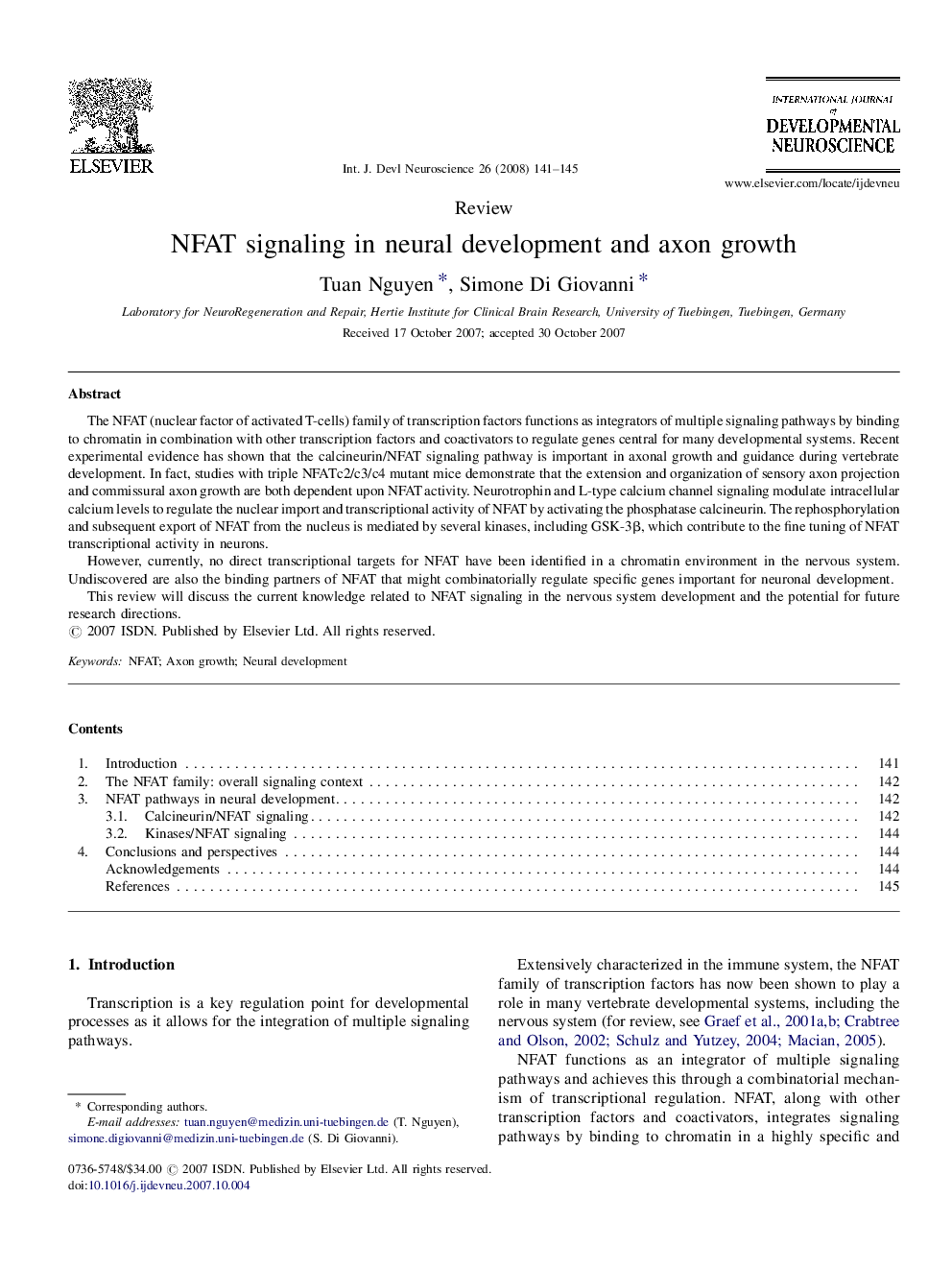| Article ID | Journal | Published Year | Pages | File Type |
|---|---|---|---|---|
| 2787091 | International Journal of Developmental Neuroscience | 2008 | 5 Pages |
The NFAT (nuclear factor of activated T-cells) family of transcription factors functions as integrators of multiple signaling pathways by binding to chromatin in combination with other transcription factors and coactivators to regulate genes central for many developmental systems. Recent experimental evidence has shown that the calcineurin/NFAT signaling pathway is important in axonal growth and guidance during vertebrate development. In fact, studies with triple NFATc2/c3/c4 mutant mice demonstrate that the extension and organization of sensory axon projection and commissural axon growth are both dependent upon NFAT activity. Neurotrophin and L-type calcium channel signaling modulate intracellular calcium levels to regulate the nuclear import and transcriptional activity of NFAT by activating the phosphatase calcineurin. The rephosphorylation and subsequent export of NFAT from the nucleus is mediated by several kinases, including GSK-3β, which contribute to the fine tuning of NFAT transcriptional activity in neurons.However, currently, no direct transcriptional targets for NFAT have been identified in a chromatin environment in the nervous system. Undiscovered are also the binding partners of NFAT that might combinatorially regulate specific genes important for neuronal development.This review will discuss the current knowledge related to NFAT signaling in the nervous system development and the potential for future research directions.
